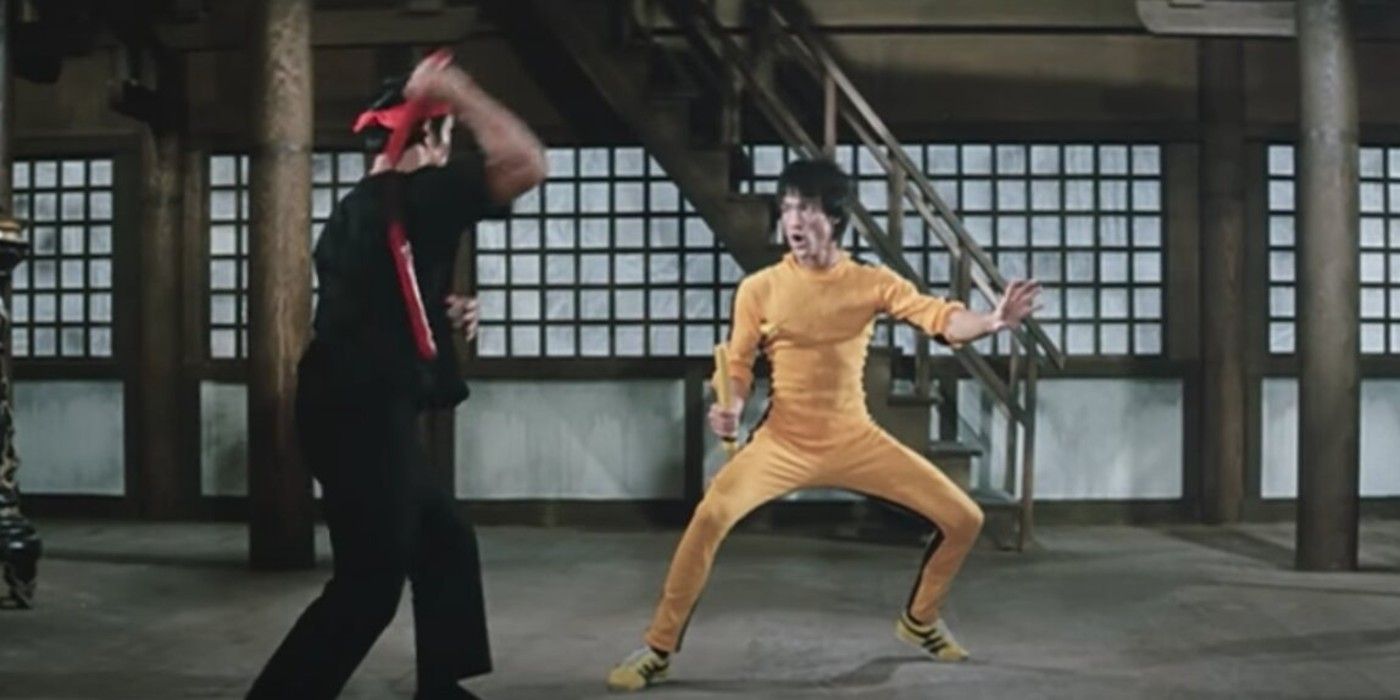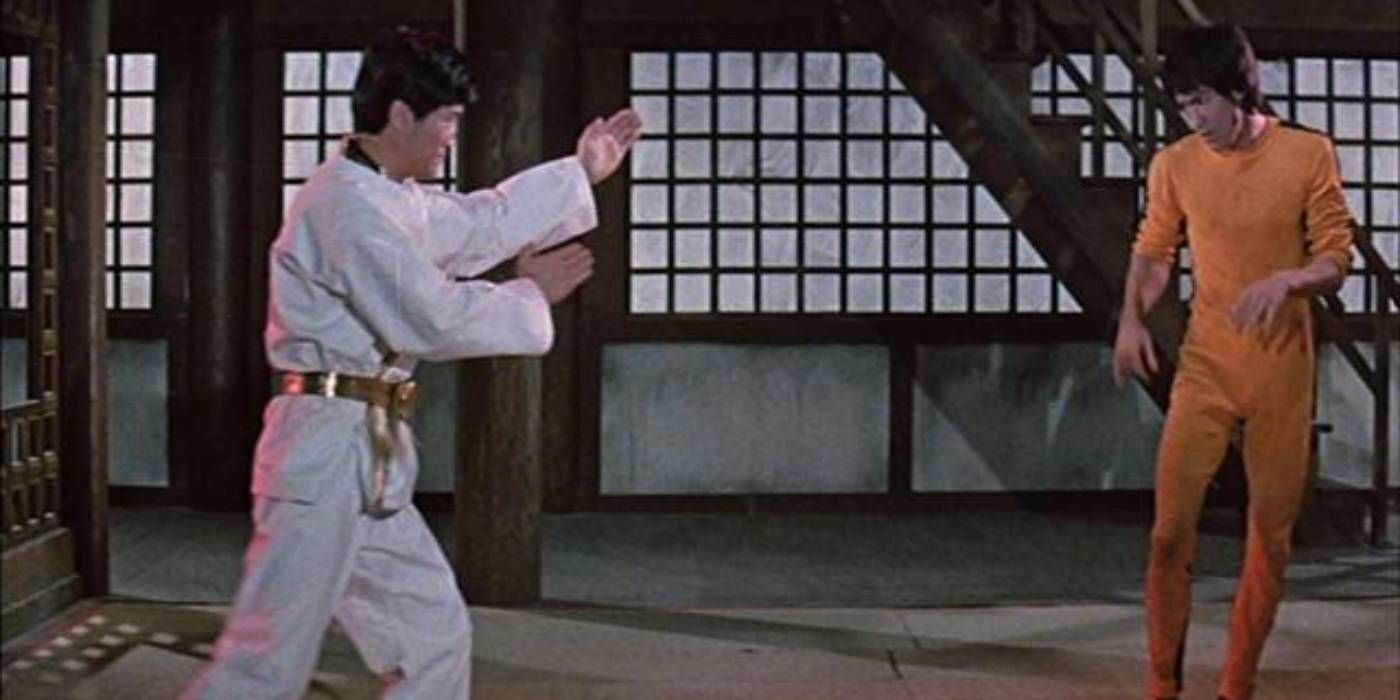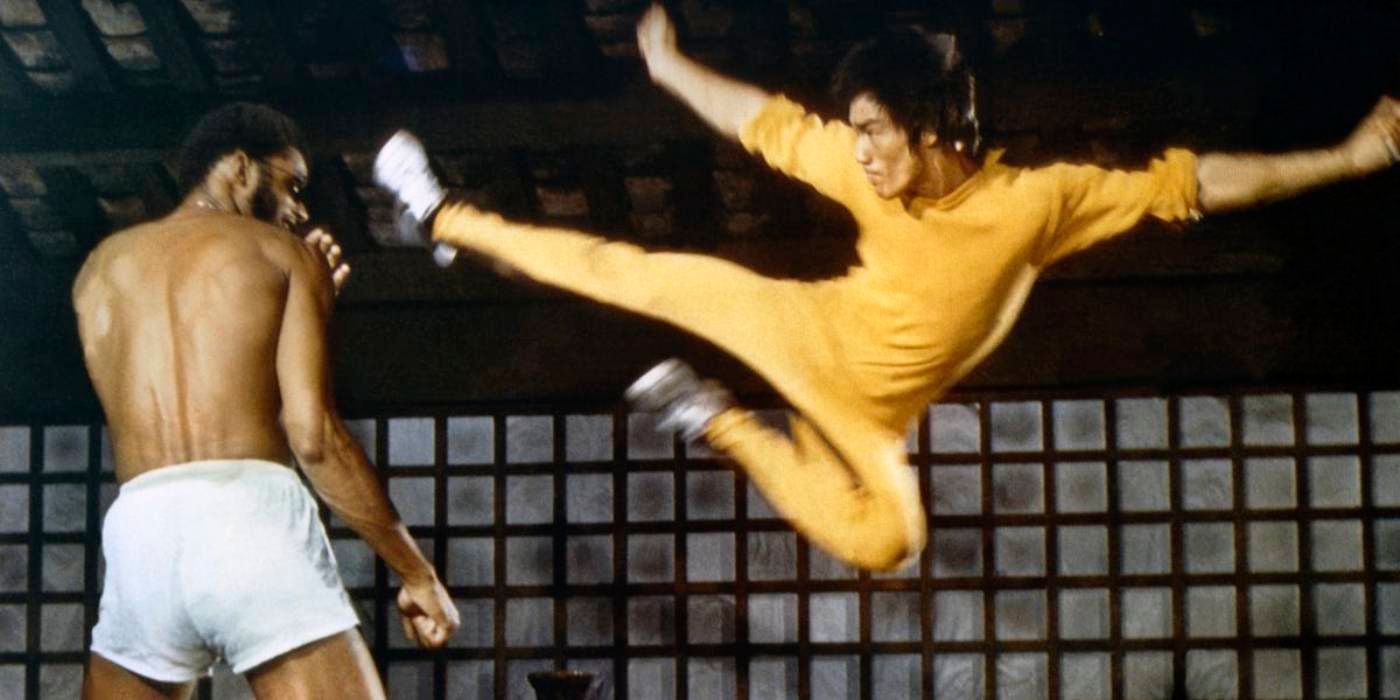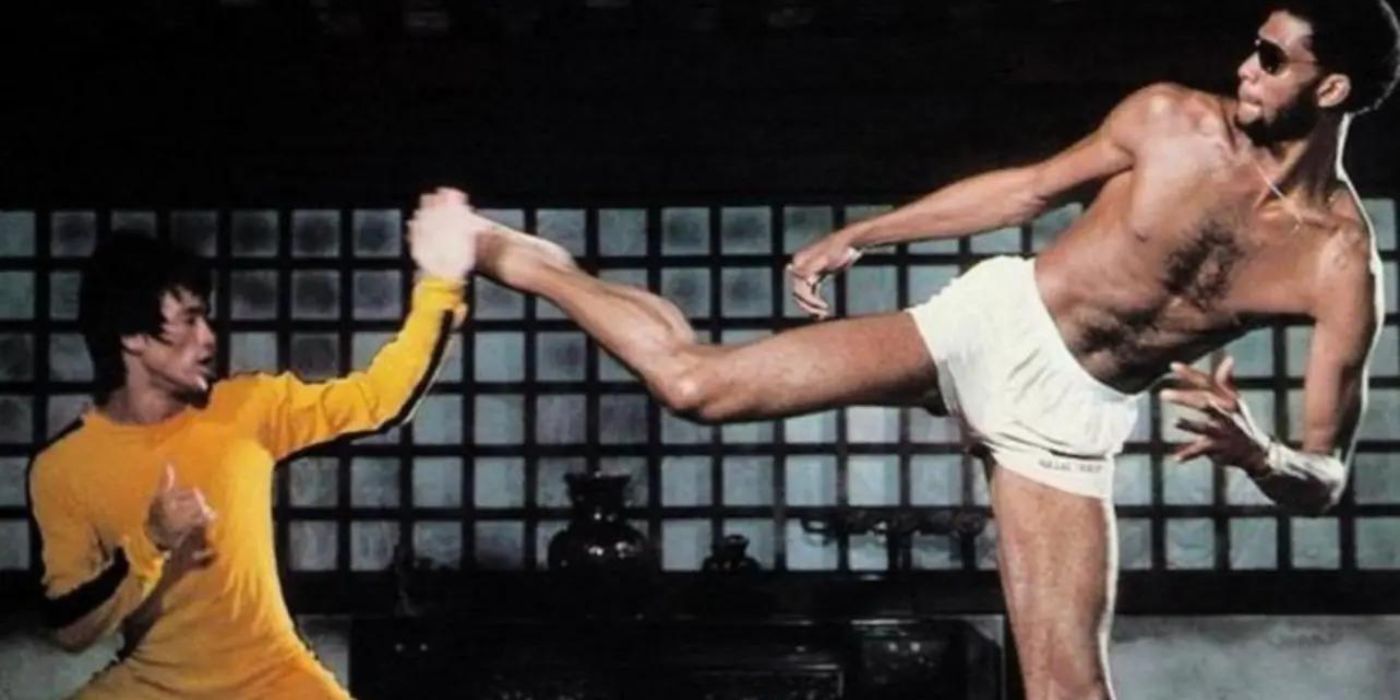The three opponents seen in Bruce Lee's unfinished movie Game of Death are key players in Lee's philosophy of fighting that he sought to convey through the film. As Bruce Lee was rising to greater levels of stardom in his career in Hong Kong movies, he began making Game of Death as a passion project, intending the film as a vehicle for his martial arts philosophy. Lee put Game of Death on hold when he landed the lead role in Enter the Dragon, but his tragic passing in 1973 left the movie incomplete, though it was eventually finished and released posthumously in 1978.
Game of Death only partially uses the footage of the three fight scenes Lee was able to complete, with the 2000 documentary Bruce Lee: A Warrior's Journey presenting all of it as far as Lee had completed it. The premise of Game of Death was to involve Bruce Lee in a yellow tracksuit fighting his way up a pagoda against exponents of different martial arts on each level. As can be expected from a Bruce Lee movie, there are major martial arts themes seen in Lee's fights with his three opponents in Game of Death and A Warrior's Journey.
3
Bruce Lee's First Opponent Is About Flexibility
Lee's first opponent in Game of Death is a weapons master, played by Lee's close friend and student Dan Inosanto. Both Lee and Inosanto bring different kinds of martial arts weaponry to their battle, Inosanto at first using a pair of Kali sticks and later breaking out a pair of nunchaku, while Lee starts out with a bamboo rod, before wielding his own set of nunchaku. This highlights the ultimate theme of the fight being about flexibility in combat.
Using weaponry as the basis for the scene, Lee conveys his philosophy of both armed and unarmed combat requiring both a flexible mindset and flexible technique to be effective. Lee's flexible bamboo rod and swift nunchaku embody both principles, with Lee using them to his advantage. Lee's opponent, while a formidable fighter himself, is a bit behind Lee in terms of combative flexibility. This ultimately leads to his demise, with Lee snapping his neck with his nunchaku in another display of applying flexibility to combat.
2
Bruce Lee's Second Opponent Is About Rhythm
When Lee reaches the next floor of the pagoda, his opponent is a Hakido master, played by real-life Hapkido exponent Ji Han Jae. With Korean Hapkido combining striking techniques with throws and joint manipulations, Lee's opponent has an effective way to counter Lee's attacks by throwing him across the mat repeatedly. Like the opening fight scene of Enter the Dragon, Lee manages to counter with some takedowns and throws of his own before ultimately breaking his opponent's back on his knee, and this all highlights the fight scene's big theme of the importance of rhythm in fighting.
Bruce Lee's Jeet Kune Do philosophy places great emphasis on adapting the unpredictable nature of fighting, and that a person's approach to fighting must be able to flow with like water. In A Warrior's Journey, Lee alludes to this principal in the previous fight with Inosanto, showing the virtue of "broken rhythmn" of a fight, and this becomes even more clear with Lee and his opponent countering each other's throws in their fight. Lee's ability to adapt his fighting techniques to the rhythm of a Hapkido master's throwing skills is what leads to Lee's victory.
1 Bruce Lee's Third Opponent Is About Strength & Pride
Lee's final opponent at the top of the pagoda Hakim is played by his Jeet Kune Do student Kareem Abdul-Jabbar, and the size and strength differential between the two is immense. As the biggest villain in any Bruce Lee movie, Lee cannot overpower Hakim with sheer strength, but finds ways around it, including wearing Hakim out with repeated takedowns to the mat and using Hakim's sensitivity to light against him. On the surface, Lee's fight with Jabbar is a very straightforward metaphor for adapting to a larger and stronger enemy, with Lee taking the fight to the ground to choke Hakim and break his neck. However, Lee also shows the role pride plays in combat, too.
In A Warrior's Journey, once it is clear that Hakim has lost, Lee offers him the chance to live by asking "Why continue? Just let me pass", but Hakim refuses, insisting that "You have forgotten that I too am not afraid of death." Hakim's hubris that he can overcome his smaller opponent ends up costing him his life, and is another of Lee's lessons about combat. Bruce Lee's original plan for Game of Death may not have been realized, and even Bruce Lee: A Warrior's Journey only realizes it partially, but Bruce Lee's martial arts philosophy is fully on display in the movie's three completed fight scenes.


